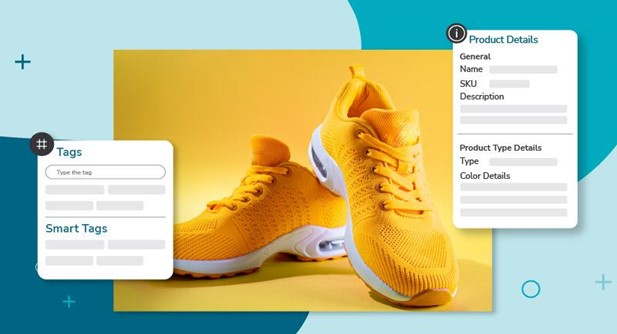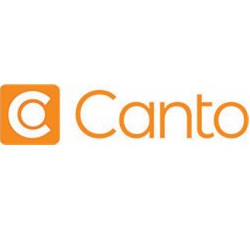For marketers at companies that handle products, managing product content across multiple channels is increasingly complex. Ensuring that images, videos, product descriptions, and data align consistently is no small task for a growing business.
Yet, consistency is critical: Customers and stakeholders expect professional, accurate, and up-to-date information wherever and wherever they engage with your brand. Without the right systems in place, you risk inefficiency, missed opportunities, and brand inconsistencies.
Enter product content management (PCM)—a strategy revolving around organizing, storing, and distributing product content, assets and information.
And at the heart of a robust PCM strategy sits digital asset management (DAM) and product information management (PIM) technology.
This article illustrates why DAM and PIM are essential for effective PCM strategy and how to optimize these technologies to improve workflows, accelerate time-to-market, and deliver a seamless customer experience.

Why Product Content Management Is a Game-Changer for Marketers
Picture this scenario:
- Your marketing team is hunting for approved product images.
- Your e-commerce manager is stuck waiting on critical updates to specifications.
- Your sales team has been using outdated pricing and off-brand collateral in their presentations.
Does this sound familiar? Without a centralized system, siloed teams rely on scattered files, spreadsheets, and endless email threads for critical updates. These inefficiencies ultimately delay campaign launches, hinder collaboration, and fail customers who expect consistent, high-quality content and accurate data.
A product content management strategy helps unify these efforts by centralizing assets and data. Instead of scrambling to update content across diverse tools or channels, teams can work from a "single source of truth."
Key benefits of PCM for marketers:
- Consistency: Ensure product assets and information are accurate across all platforms
- Speed: Simplify updates and approval workflows to meet tight deadlines and respond to market trends
- Enhanced collaboration: Break down silos and improve communication across marketing, sales, product, and e-commerce teams
- Improved customer experience: Deliver cohesive branding and accurate content that builds customer trust and loyalty
However, a successful PCM strategy requires the right tools. That's where DAM and PIM come in.
Understanding DAM and PIM
What is a digital asset management (DAM) system?
DAM software is your solution for managing media content, such as images, videos, graphics, and marketing collateral. Whether your team needs high-quality product images for a catalog, or videos for social media, a DAM platform stores, organizes, and makes these assets accessible (and crucially, searchable) for approved use.
Core benefits of DAM:
- Easy discovery with metadata (tags, keywords, custom fields), and AI searchability
- Quick access to approved assets with role-based permissions
- Consistent delivery via content delivery networks (CDN), robust integrations, and customized sharing capabilities
What is a product information management (PIM) system?
If DAM focuses on visuals, PIM manages product data, such as SKUs, descriptions, specifications, and pricing. It ensures that the information customers and partners see across channels is always accurate and up to date.
Core benefits of PIM:
- Consolidates product data into one searchable platform
- Automates updates and distribution for real-time accuracy
- Ensures retailer consistency by mapping channel-specific requirements
Together, DAM and PIM create a streamlined PCM system, allowing teams to manage digital assets as well as product data seamlessly. Neither tool, alone, can provide the full breadth of functionality needed for a modern, scalable omnichannel content strategy.

Five Steps to Building a PCM Strategy With DAM + PIM Technology
1. Invest in a unified DAM + PIM platform
It starts with choosing the right tools. Misaligned or separate systems force manual, redundant work and open opportunities for errors. A unified DAM+PIM platform brings product images, videos, and data together in one place.
Benefits of a unified platform:
- Team collaboration: Marketing, sales, creative, product, and e-commerce teams work from the same playbook
- Centralized content: Avoid scattered spreadsheets, lost files, or outdated documents
2. Migrate and organize your content
Once you have the technology in place, it's time to streamline your content library. A chaotic folder structure or inconsistent naming conventions results in longer search times and higher error rates.
Here's how to get organized:
- Establish clear naming conventions for assets like SKUs, models, and product descriptions.
- Use metadata, tags, and keywords to make searching faster.
- Leverage AI-powered tools for auto-tagging and content discovery, reducing manual labor.
A well-structured content library ensures clarity and efficiency, empowering your team to focus their time on high-impact activities.
3. Standardize workflows and processes
A tool is only as effective as the processes behind it. Standardizing workflows ensures that your DAM and PIM systems operate with clarity and consistency, and will also ensure wider adoption.
For DAM:
- Implement approval workflows for asset creation.
- Use style guides to ensure consistent branding.
- Set role-based permissions and take advantage of version control features to oversee access to sensitive content.
For PIM:
- Automate updates across key sales and marketing platforms.
- Map product data to meet specific retailer requirements each time a new retailer is added to the system.
- Ensure real-time accuracy in product information by involving product teams in your workflows, or by integrating your ERP or inventory management systems.
Standardized workflows not only boost productivity but also make compliance and accountability easier for senior leadership to track.
4. Integrate your content ecosystem
Your DAM+PIM system should connect with the rest of your tech stack to enable seamless workflows. Integrations with tools—CMS platforms, creative software, e-commerce software, and social media schedulers—allow teams to access and share content without switching platforms.
For example, integrate your DAM+ PIM with your e-commerce platform to automatically update product pages across different channels with the latest images and specifications. Doing so ensures your website, retailer platforms, and internal tools stay in sync.
5. Activate your PCM strategy
With tools and processes ready to go, it's time to activate your PCM strategy across all channels.
Key actions to launch your PCM system:
- Roll out content using DAM-powered CDN capabilities to ensure fast and consistent media delivery.
- Automate updates to keep product listings fresh and relevant everywhere your brand lives.
- Use tracking tools to monitor performance metrics and identify optimization opportunities.
An active PCM strategy doesn't stop at deployment. Continually refine your workflows, explore opportunities to streamline even further, and scale your system as needed.

A Stronger PCM = A Stronger Brand
For marketers who handle products, the stakes are high. Customers and partners demand accurate, engaging, and cohesive product content regardless of the channel.
By implementing a robust PCM strategy powered by DAM and PIM technology, you'll not only meet these expectations but also drive operational efficiency, boost team collaboration, and accelerate go-to-market timelines.




